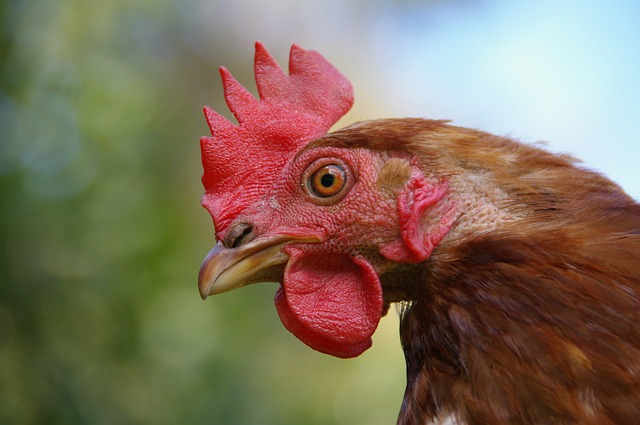The 86th OIE General Session was the occasion to give OIE Member Countries, an overview of the global animal health situation, as well as to analyse trends in the evolution of priority terrestrial and aquatic animal diseases.
One of the key missions of the OIE is to ensure transparency of the global animal health situation, including zoonoses. The situation of global animal health was presented to the Assembly based on the reports submitted to the OIE by Member as well as non-member Countries between 1 January 2017 and 6 May 2018.
Particular attention was paid to specific diseases subject to global control or eradication efforts, or diseases of major interest, including:
-

Image/wernerdetjen via pixabay the global epizootic of highly pathogenic avian influenza (HPAI) in birds. The data collected for HPAI through WAHIS for 2017/2018 highlights a further spread of the disease, with the highest number, nearly 40% of countries, reporting the disease present, since the 2006 crisis. These data show that since the beginning of 2017, the world is experiencing a massive spread of avian influenza in animals, with continuously changing virus behaviour. In this context, it is important to collect as much accurate, real-time information as possible. Member Countries should also maintain their efforts in disease prevention and monitoring, as the most effective way to prevent potential future panzootic events.
- peste des petits ruminants (PPR) is one of the priority diseases identified by the GF-TADs (FAO-OIE Global Framework for the progressive control of Transboundary Animal Diseases). A Global Strategy for its control and eradication by 2030 was adopted in 2015. Since this date, outbreaks have been reported in previously non PPR affected countries, which shows the urgent need to improve the prevention and control measures as defined by the Global Strategy.
-

FMD image/ Lawrence Livermore National Laboratory foot and mouth disease (FMD) remained one of the three most frequently notified OIE-listed diseases, during 2017 and early 2018. The disease was reported present, under five serotypes, in 34% of the 184 reporting countries and territories.
- rabies continues to threaten the health of both humans and animals. In particular, dog-mediated human rabies costs the lives of thousands of people every year mainly in Africa and Asia, even though the disease is 100% preventable. A global business plan for the elimination of dog-mediated human rabies was launched in 2017, under the initiative of the “United against rabies” collaboration composed of the four partner organisations: World Organisation for Animal Health (OIE), World Health Organization (WHO), Food and Agriculture Organization of the United Nations (FAO) and the Global Alliance for Rabies Control (GARC). Between 2017 and early May 2018, the disease was reported present in 57% of the 183 countries and territories which notified information to the OIE.
- bovine tuberculosis, a zoonosis caused by Mycobacterium bovis is traditionally recognised as a public health issue and is a source of economic damage to livestock owners. It has been successfully controlled or eradicated in domestic animals in many countries. However, the disease remains prevalent in domestic animals or wildlife in parts of Africa and Asia and the Pacific, as well as some regions in the Americas and Europe. In 2017 and early 2018, the disease was reported present by 43% of the reporting countries and territories and is distributed in every region of the world. A Roadmap for Zoonotic Tuberculosis was launched in 2017 by the OIE and its partners, to support the worldwide effort needed to end the global tuberculosis epidemic.
- a significant spread of lumpy skin disease (LSD), a devastating disease of cattle, occurred over the last few years, in previously unaffected countries, particularly in Europe, which is now considered a new LSD-affected region in addition to its traditional range in Africa and the Middle East. The prevention and control strategies in the recently affected areas have proved to be effective since no new country reported the first occurrence of the disease during 2017-2018. Nevertheless, the OIE encourages its Members in at-risk areas to initiate vaccination campaigns ahead of virus entry and to continue timely reporting of all outbreaks through WAHIS. Timely sharing of information on LSD serves the purpose of ensuring a good epidemiological understanding of the current risk situation for preparedness purposes.
- The global situation of African swine fever (ASF) is of concern to many regions around the globe due to the current epizootic situation causing substantial losses and sanitary barriers for trade of animals and their products. Since no vaccine exists against ASF and none is expected in the near future, risk management should focus on prevention of the disease through reducing the risk of virus introduction and exposure to potential sources as well as by the adequate implementation of biosecurity procedures.
- an emerging disease in aquatic animals, Tilapia lake virus disease has caused substantial mortality rates of up to 70% in farmed tilapia and the wild population over the last years in several regions of the world. In 2017 and early 2018, six countries and territories in the Americas, Asia and the Middle East notified new outbreaks of this disease, which represents an important risk for the fast-growing worldwide tilapia production sector.



12 thoughts on “Global animal health situation addressed at 86th OIE General Session”